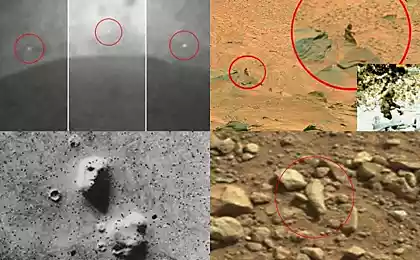1004
The most mysterious places of the world
We fly in space, a race to build a skyscraper, clone living organisms and do many things that until recently seemed impossible. And while still unable to solve the puzzle builders and thinkers who lived thousands of years ago. Ancient cobblestone weighing hundreds of tons of surprises us more than a computer the size of a half-palm.
Stonehenge, UK, Salisbury
Altar, the observatory, the tomb calendar? Scientists have not agreed. Five thousand years ago there were circular ditch and trees around a diameter of 115 m. A few centuries later, the ancient builders brought here 80 four-ton stone, and a couple of centuries - 30 megaliths weighing 25 tons. The stones were set in a circle in the form of a horseshoe. The kind in which Stonehenge survives today, largely the result of human activity of recent centuries. People continued to work on the stones: the peasants otkolupyvali them to pieces, amulets, tourists labeled territory inscriptions, and cooked the restorers of old, as there they that stood correctly.

Kukulkan Pyramid, Mexico, Chichen Itza
Every year during the spring and autumn equinox at the foot of the sanctuary of the supreme deity of the Maya - the Feathered Serpent - gather thousands of tourists. They are watching a miracle "phenomenon" Kukulcan serpent moves down along the balustrade of the main staircase. It creates the illusion of a game triangular shadows cast by the nine platforms of the pyramid at the moment when the sun, tending to decline, in 10 minutes it covers the northwest corner. Be the sanctuary shifted even a degree or anything like that would not have happened.
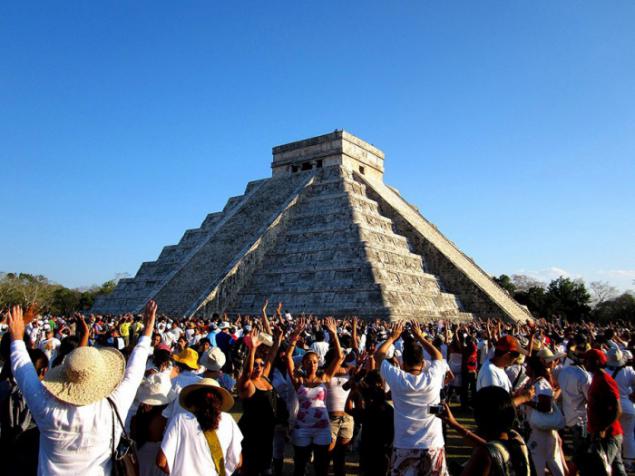
Carnac stones, France, Brittany, Carnac
In total, about 4000 megaliths up to four meters apart slender alleys near the town of Carnac. The rows are parallel to each other or to fan out, here and there a circle. The complex dates back to the V-IV millennium BC The legends of Brittany, it is the magician Merlin got petrified ranks of Roman legionnaires.

The stone balls of Costa Rica
Pre-Columbian artifacts, scattered near the Pacific coast of Costa Rica, were discovered in the 1930s banana workers. Hoping to find gold inside, vandals destroyed a lot of balls. Now most of the remaining are kept in museums. Some stones diameter reaches 2, 5 m, weight - 15 tons. Purpose is unknown.
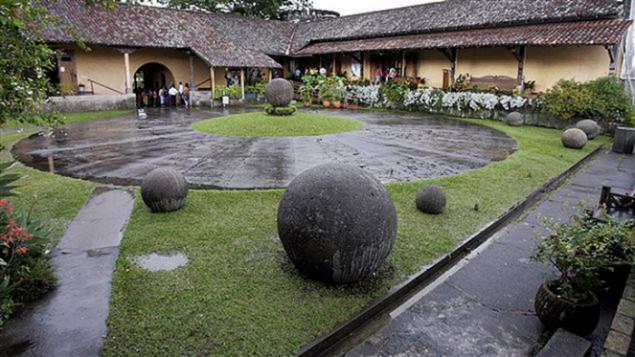
Georgia Guidestones, United States, Georgia, Elbert
In 1979, one under the pseudonym RC Christian ordered the construction company manufacturing and installation of the monument - the construction of six granite monoliths weighing more than 100 tons. On the four side plates engraved the Ten Commandments descendants in eight languages, including Russian. The last paragraph reads: "Do not be a cancer for the Earth, nature, too, leave the place!»

Nuraghe of Sardinia, Italy, Sardinia
Semi-conical structure, resembling a huge hives (up to 20 m), appeared in Sardinia at the end of the II millennium BC, before the arrival of the Romans. The tower was built without a foundation of overlapping stone blocks, held together not by any solution and keep only due to its own weight. Appointment Nuraghe unclear. Characteristically, the archeologists have repeatedly found during excavations miniature models of these towers of bronze.

Saksauaman, Peru, Cuzco
Archaeological Park at an altitude of 3,700 meters and an area of 3,000 hectares located north of the capital of the Inca Empire. Defensive while the temple complex was built at the turn of XV-XVI centuries. Zigzag battlements, reaching 400 meters in length and six in height, are made of 200-ton stone blocks. How the Incas set these blocks as they chased one under the other - unknown. Top Saksauaman looks like a toothy head cougar Cusco (the city was founded in the form of the sacred animal of the Incas).
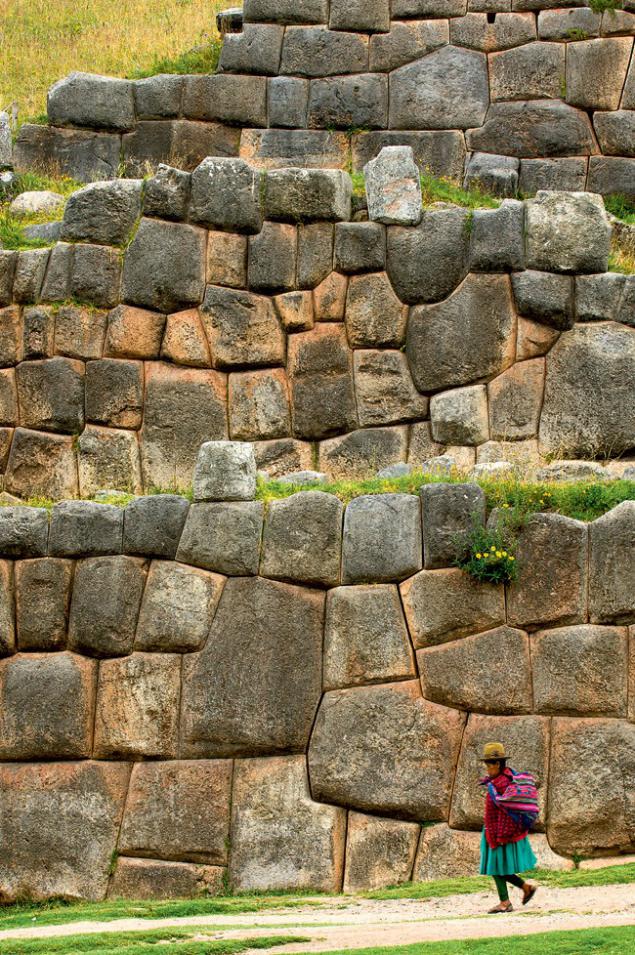
Arkaim, Russia, Chelyabinsk region
The settlement of the Bronze Age (III-II millennium BC) is on the same latitude as Stonehenge. Coincidence? Scientists do not know. Two rows of circular wall (diameter far - 170 m), the system of sewers and drainage, well in every house - a highly developed culture of evidence. The monument was discovered by students and pupils of the archaeological expedition in 1987. (In the photo - Model reconstruction.)
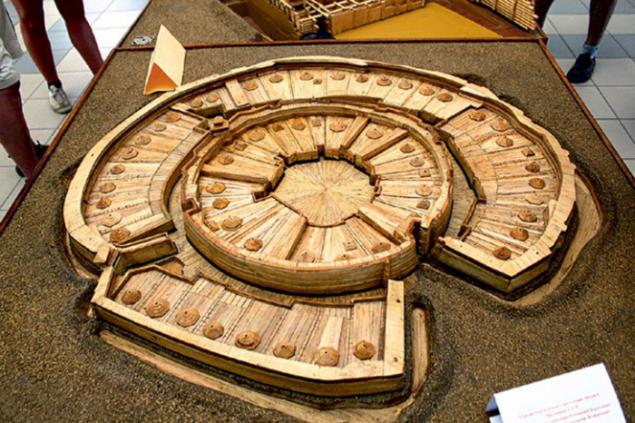
Newgrange, Ireland, Dublin
The Celts called it the mound of fairies and considered the home of one of its main gods. The circular structure of stone, earth and rubble 85 meters in diameter was built over 5,000 years ago. Inside the mound is a corridor ending ritual chamber. During the winter solstice, this brightly lit chamber for 15-20 minutes ray of sun falling through the window over the entrance to the tunnel.

Coral Castle, United States, Florida, Homestead
Baroque structure alone for 28 years (1923-1951) built a Latvian immigrant Edward Lindskalnin in honor of his lost love. The way a person humble height and build to move in space huge blocks, remains a mystery.

Statues "Reptilians" French Polynesia, the island of Nuku Hiva
Statues in a place called Temehea-Tohu in the Marquesas depict strange creatures, the appearance of which is associated in the public mind with the aliens. They are different: there are large largemouth "reptilians", but there are others: a small trunk and a disproportionately large elongated head helmets with huge eyes. They have in common one thing - an angry facial expressions. Was it aliens from other worlds or just priests in disguise - is unknown. The statues date back to around the beginning of the II millennium.
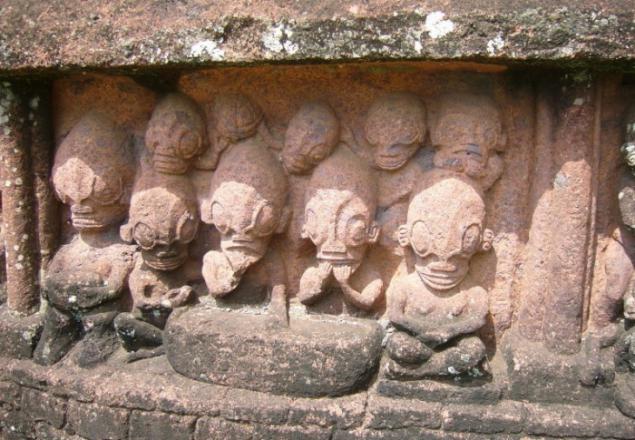
Pyramid Ёnaguni, Japan, Ryukyu
Monuments of huge stone pillars and platforms located under water at a depth of 5 to 40 meters, were discovered in 1986. The most important of these structures has the form of a pyramid. Not far away is a large playground with steps, like a stadium with spectator stands. One of the objects resembles a huge head, like the Moai statues on Easter Island. In the scientific community there is debate: many people think that lying on the ocean floor formations are exclusively of natural origin. But singles like Masaaki Kimura, a professor of the University of the Ryukyus, repeatedly dive to the ruins, insist that there has not been without a man.
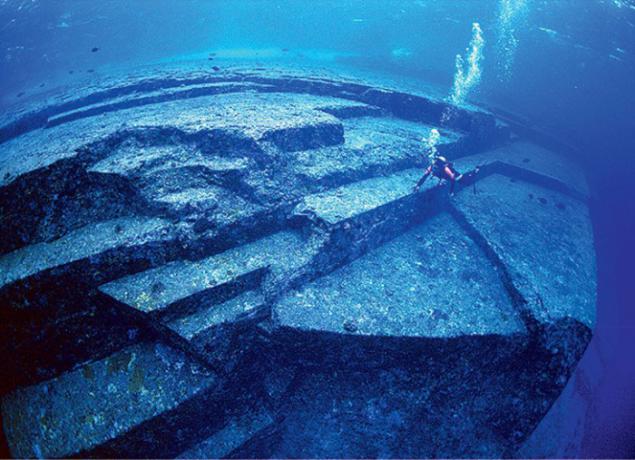
Goseck circle, Germany, goseck
The ring system of concentric moats and wooden fences were set up between 5000 and 4800 BCE Now renovated complex. Presumably, it was used as a solar calendar.
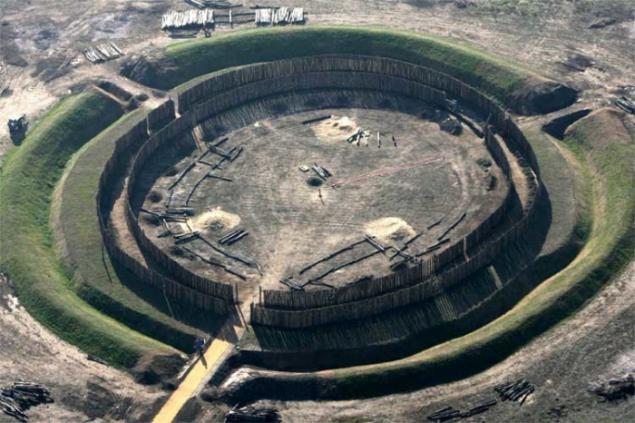
Great Zimbabwe, Zimbabwe, Masvingo
One of the largest and oldest stone structures in South Africa was built in the XI century, and in the XV century for unknown reasons it was abandoned. All designs (up to 11 meters in height and 250 in length) erected by drywall. Presumably, in the settlement lived up to 18 000 people.
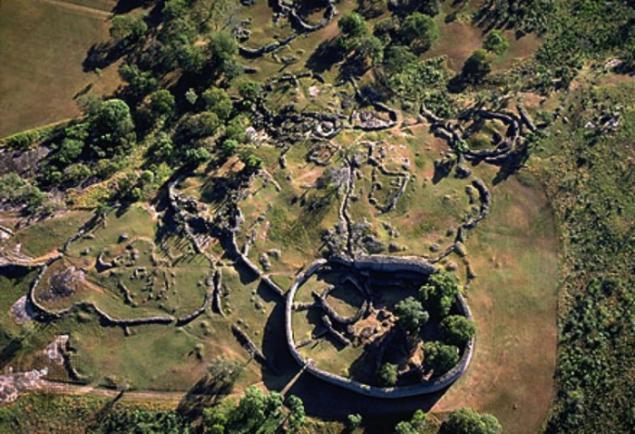
Column Delhi, India, New Delhi
Iron towers greater than 7 meters and weighing more than 6 tons - of the architectural complex of Qutub Minar. It was cast in honor of the king Chandragupta II in 415. For unclear reasons, column, almost 100% made of iron, is virtually impossible to corrosion. Scientists try to explain this fact by different reasons: Special skill and techniques of ancient Indian blacksmiths, dry air and extreme weather conditions in the area of New Delhi, the formation of a protective shell - in particular due to the fact that the Indians anoint the sacred monument oils and incense. Ufologists, as usual, see the column next intervention evidence of extraterrestrial intelligence. But the secret of "Stainless Steel" is still not solved.
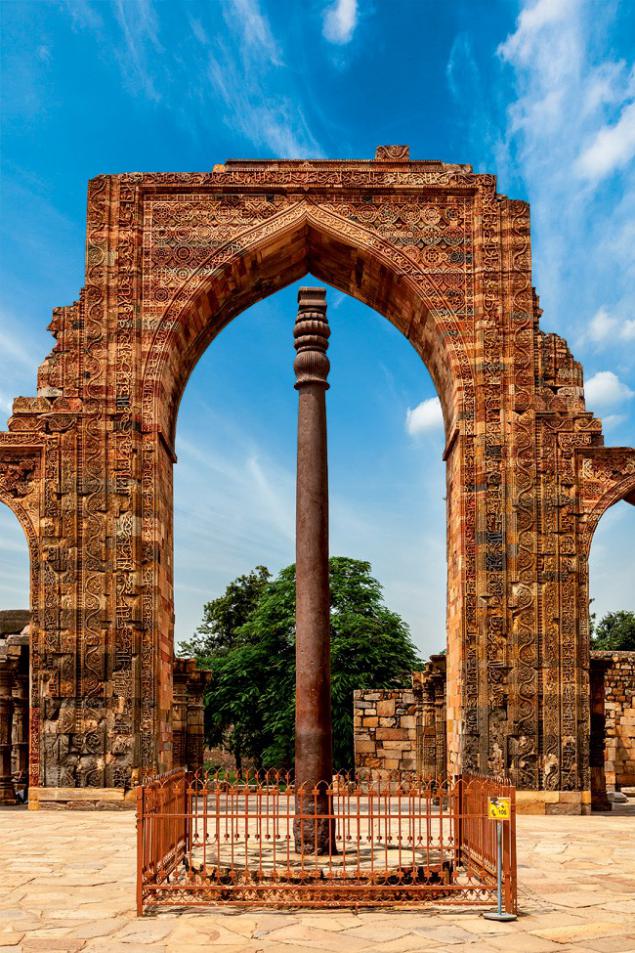
Lines of Nazca, Peru, Nazca
47-foot spider, hummingbird 93-meter, 134-meter eagle, lizard, alligator, snake, zoomorphic and other humanlike creatures ... giant image with a bird's eye scratched seem devoid of vegetation on the rock, and as if with one hand, in the same style . In fact, this groove depth of 50 cm and a width of 135 cm, made at different times in the V-VII centuries.
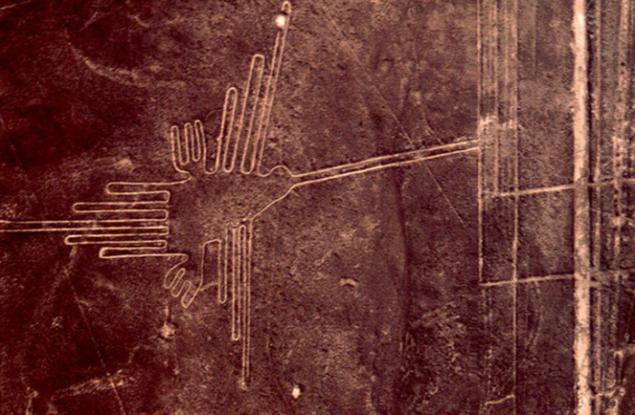
Observatory Nabta, Nubia, Sahara
In the sands near the dry lake is the oldest arheoastronomichesky monument on the planet for 1000 years older than Stonehenge. Location megaliths allows you to define the summer solstice. Archeologists believe that people lived here seasonally, when water in the lake was so needed in the calendar.

The Antikythera mechanism, Greece, Antikifera
Mechanical design with dials, gears and arrows in the early XX century, was found on the sunken ship, en route from Rhodes (100 BC). After extensive research and reconstructions researchers found that the unit served astronomical purposes - allows you to monitor the movements of celestial bodies and perform very complex calculations.
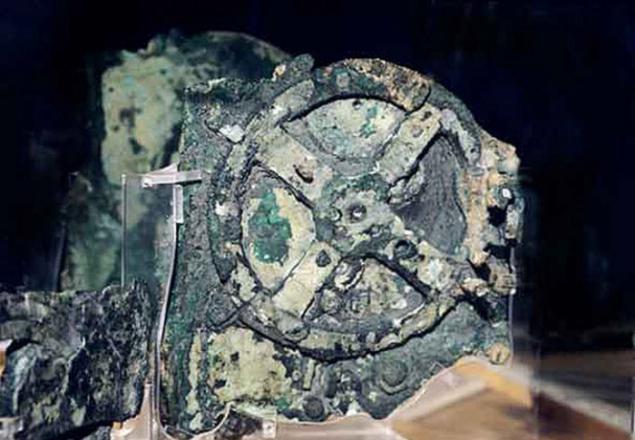
Plates of Baalbek, Lebanon
The ruins of a Roman temple complex belong to the I-II century AD But the Romans built a shrine for good reason. At the base of the Temple of Jupiter are more ancient slabs weighing 300 tonnes. Western retaining wall is a series of "Trilithon" - three limestone blocks, each more than 19 meters long, 4 meters high and weighing 800 tons. Roman equipment was unable to lift a weight. By the way, not far from the complex is not one thousand years is one more block - under 1,000 tons.

Gobekli Tepe, Turkey
The complex in the Armenian highlands is considered the oldest of the largest megalithic structures (approximately X-IX millennium BC). While people are still engaged in hunting and gathering, but someone was able to erect a huge following of stelae with images of animals.
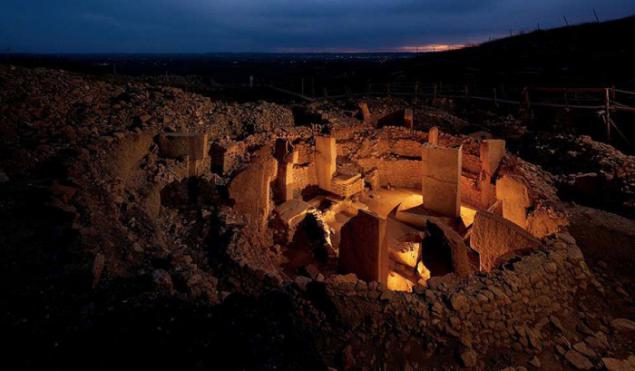
©
Stonehenge, UK, Salisbury
Altar, the observatory, the tomb calendar? Scientists have not agreed. Five thousand years ago there were circular ditch and trees around a diameter of 115 m. A few centuries later, the ancient builders brought here 80 four-ton stone, and a couple of centuries - 30 megaliths weighing 25 tons. The stones were set in a circle in the form of a horseshoe. The kind in which Stonehenge survives today, largely the result of human activity of recent centuries. People continued to work on the stones: the peasants otkolupyvali them to pieces, amulets, tourists labeled territory inscriptions, and cooked the restorers of old, as there they that stood correctly.

Kukulkan Pyramid, Mexico, Chichen Itza
Every year during the spring and autumn equinox at the foot of the sanctuary of the supreme deity of the Maya - the Feathered Serpent - gather thousands of tourists. They are watching a miracle "phenomenon" Kukulcan serpent moves down along the balustrade of the main staircase. It creates the illusion of a game triangular shadows cast by the nine platforms of the pyramid at the moment when the sun, tending to decline, in 10 minutes it covers the northwest corner. Be the sanctuary shifted even a degree or anything like that would not have happened.

Carnac stones, France, Brittany, Carnac
In total, about 4000 megaliths up to four meters apart slender alleys near the town of Carnac. The rows are parallel to each other or to fan out, here and there a circle. The complex dates back to the V-IV millennium BC The legends of Brittany, it is the magician Merlin got petrified ranks of Roman legionnaires.

The stone balls of Costa Rica
Pre-Columbian artifacts, scattered near the Pacific coast of Costa Rica, were discovered in the 1930s banana workers. Hoping to find gold inside, vandals destroyed a lot of balls. Now most of the remaining are kept in museums. Some stones diameter reaches 2, 5 m, weight - 15 tons. Purpose is unknown.

Georgia Guidestones, United States, Georgia, Elbert
In 1979, one under the pseudonym RC Christian ordered the construction company manufacturing and installation of the monument - the construction of six granite monoliths weighing more than 100 tons. On the four side plates engraved the Ten Commandments descendants in eight languages, including Russian. The last paragraph reads: "Do not be a cancer for the Earth, nature, too, leave the place!»

Nuraghe of Sardinia, Italy, Sardinia
Semi-conical structure, resembling a huge hives (up to 20 m), appeared in Sardinia at the end of the II millennium BC, before the arrival of the Romans. The tower was built without a foundation of overlapping stone blocks, held together not by any solution and keep only due to its own weight. Appointment Nuraghe unclear. Characteristically, the archeologists have repeatedly found during excavations miniature models of these towers of bronze.

Saksauaman, Peru, Cuzco
Archaeological Park at an altitude of 3,700 meters and an area of 3,000 hectares located north of the capital of the Inca Empire. Defensive while the temple complex was built at the turn of XV-XVI centuries. Zigzag battlements, reaching 400 meters in length and six in height, are made of 200-ton stone blocks. How the Incas set these blocks as they chased one under the other - unknown. Top Saksauaman looks like a toothy head cougar Cusco (the city was founded in the form of the sacred animal of the Incas).

Arkaim, Russia, Chelyabinsk region
The settlement of the Bronze Age (III-II millennium BC) is on the same latitude as Stonehenge. Coincidence? Scientists do not know. Two rows of circular wall (diameter far - 170 m), the system of sewers and drainage, well in every house - a highly developed culture of evidence. The monument was discovered by students and pupils of the archaeological expedition in 1987. (In the photo - Model reconstruction.)

Newgrange, Ireland, Dublin
The Celts called it the mound of fairies and considered the home of one of its main gods. The circular structure of stone, earth and rubble 85 meters in diameter was built over 5,000 years ago. Inside the mound is a corridor ending ritual chamber. During the winter solstice, this brightly lit chamber for 15-20 minutes ray of sun falling through the window over the entrance to the tunnel.

Coral Castle, United States, Florida, Homestead
Baroque structure alone for 28 years (1923-1951) built a Latvian immigrant Edward Lindskalnin in honor of his lost love. The way a person humble height and build to move in space huge blocks, remains a mystery.

Statues "Reptilians" French Polynesia, the island of Nuku Hiva
Statues in a place called Temehea-Tohu in the Marquesas depict strange creatures, the appearance of which is associated in the public mind with the aliens. They are different: there are large largemouth "reptilians", but there are others: a small trunk and a disproportionately large elongated head helmets with huge eyes. They have in common one thing - an angry facial expressions. Was it aliens from other worlds or just priests in disguise - is unknown. The statues date back to around the beginning of the II millennium.

Pyramid Ёnaguni, Japan, Ryukyu
Monuments of huge stone pillars and platforms located under water at a depth of 5 to 40 meters, were discovered in 1986. The most important of these structures has the form of a pyramid. Not far away is a large playground with steps, like a stadium with spectator stands. One of the objects resembles a huge head, like the Moai statues on Easter Island. In the scientific community there is debate: many people think that lying on the ocean floor formations are exclusively of natural origin. But singles like Masaaki Kimura, a professor of the University of the Ryukyus, repeatedly dive to the ruins, insist that there has not been without a man.

Goseck circle, Germany, goseck
The ring system of concentric moats and wooden fences were set up between 5000 and 4800 BCE Now renovated complex. Presumably, it was used as a solar calendar.

Great Zimbabwe, Zimbabwe, Masvingo
One of the largest and oldest stone structures in South Africa was built in the XI century, and in the XV century for unknown reasons it was abandoned. All designs (up to 11 meters in height and 250 in length) erected by drywall. Presumably, in the settlement lived up to 18 000 people.

Column Delhi, India, New Delhi
Iron towers greater than 7 meters and weighing more than 6 tons - of the architectural complex of Qutub Minar. It was cast in honor of the king Chandragupta II in 415. For unclear reasons, column, almost 100% made of iron, is virtually impossible to corrosion. Scientists try to explain this fact by different reasons: Special skill and techniques of ancient Indian blacksmiths, dry air and extreme weather conditions in the area of New Delhi, the formation of a protective shell - in particular due to the fact that the Indians anoint the sacred monument oils and incense. Ufologists, as usual, see the column next intervention evidence of extraterrestrial intelligence. But the secret of "Stainless Steel" is still not solved.

Lines of Nazca, Peru, Nazca
47-foot spider, hummingbird 93-meter, 134-meter eagle, lizard, alligator, snake, zoomorphic and other humanlike creatures ... giant image with a bird's eye scratched seem devoid of vegetation on the rock, and as if with one hand, in the same style . In fact, this groove depth of 50 cm and a width of 135 cm, made at different times in the V-VII centuries.

Observatory Nabta, Nubia, Sahara
In the sands near the dry lake is the oldest arheoastronomichesky monument on the planet for 1000 years older than Stonehenge. Location megaliths allows you to define the summer solstice. Archeologists believe that people lived here seasonally, when water in the lake was so needed in the calendar.

The Antikythera mechanism, Greece, Antikifera
Mechanical design with dials, gears and arrows in the early XX century, was found on the sunken ship, en route from Rhodes (100 BC). After extensive research and reconstructions researchers found that the unit served astronomical purposes - allows you to monitor the movements of celestial bodies and perform very complex calculations.

Plates of Baalbek, Lebanon
The ruins of a Roman temple complex belong to the I-II century AD But the Romans built a shrine for good reason. At the base of the Temple of Jupiter are more ancient slabs weighing 300 tonnes. Western retaining wall is a series of "Trilithon" - three limestone blocks, each more than 19 meters long, 4 meters high and weighing 800 tons. Roman equipment was unable to lift a weight. By the way, not far from the complex is not one thousand years is one more block - under 1,000 tons.

Gobekli Tepe, Turkey
The complex in the Armenian highlands is considered the oldest of the largest megalithic structures (approximately X-IX millennium BC). While people are still engaged in hunting and gathering, but someone was able to erect a huge following of stelae with images of animals.

©

















